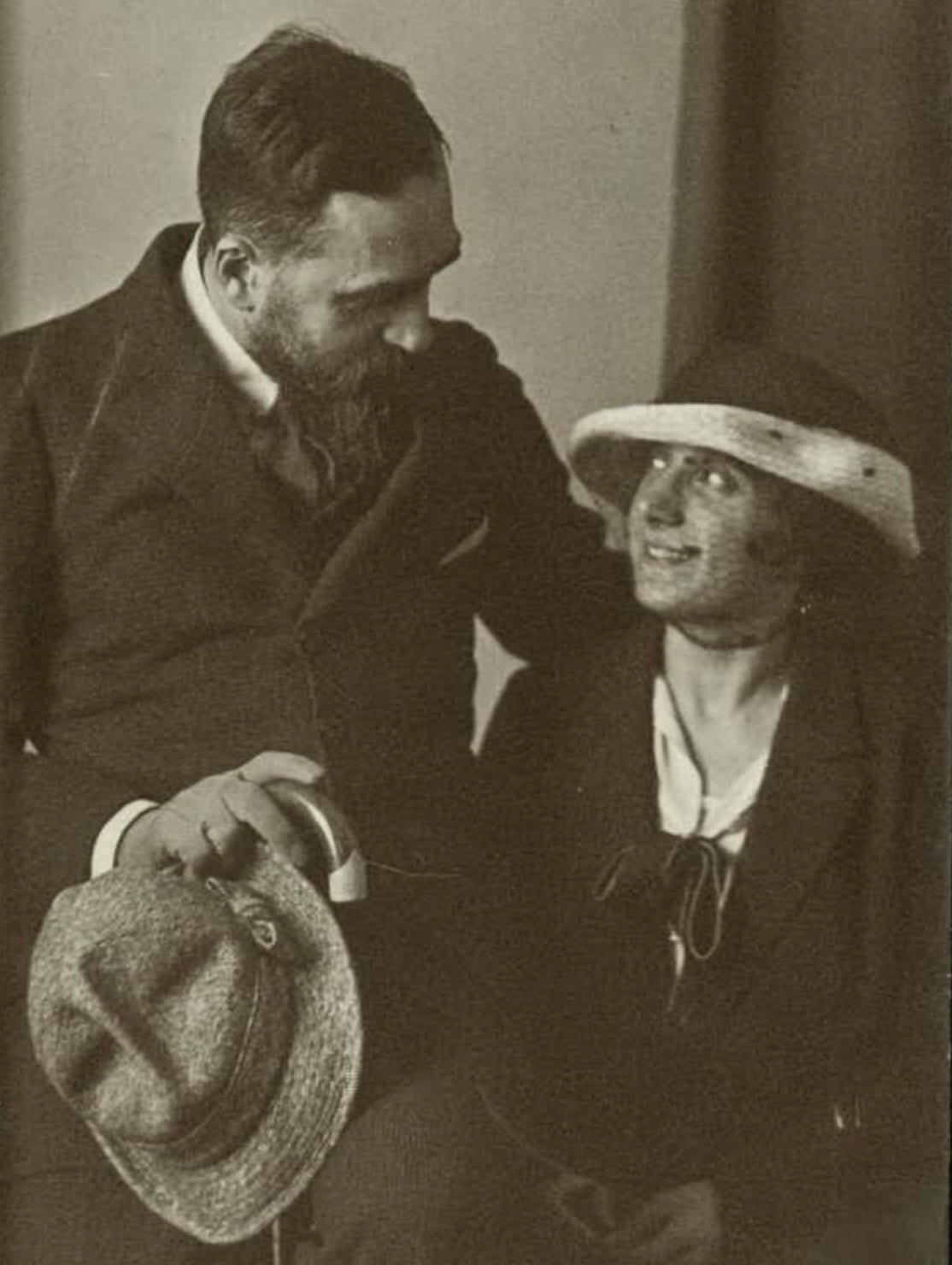Another notable in-law: Zionist artist Hermann Struck
I began this recent round of intense Paechter research in November after running across Renee Cafiero's postings on Ancestry. It is appropriate we return to the Emil Paechter family to bring this chapter to a close, at least for now.
When the first world war ended, one of its most important results was that the artist Hermann Struck married my aunt.
That's Henry Pachter writing in Weimar Etudes, his 1982 posthumous collection of essays and autobiographical sketches. The aunt he refers to is not on his father's Paechter side, but on his mother's Streisand side. But Anneliese Landau was an in-law, too. Let's take a look at Hermann Struck.
He was already a prominent artist in Berlin before World War I, having studied at the Berlin Academy and published an influential textbook on etching in 1908. He was an active member of the Berlin Succession art movement. While pursuing his secular art career, he was also an orthodox Jew and fervent zionist. From Wikipedia:
Struck was a fervent Zionist and Jewish activist. He visited the Land of Israel in 1903, then part of the Ottoman Empire, and displayed his art at the Fifth Zionist Congress, and was a founder of the Mizrachi Religious Zionist movement. At the same time, he was a German patriot and volunteered for military service in World War I serving as a translator, liaison officer and military artist. He was awarded the Iron Cross 1st Class and promoted to an officer for bravery, in 1917 he became the referent for Jewish affairs at the German Eastern Front High Command.
From an article at Leo Baeck Institute, which hosts a wonderful online collection of Struck's work, we learn he was involved as an advocate for Jewish affairs at the Paris Peace Conference, where protections for minority rights were included as part the Treaty of Versailles, which was signed by Germany and the Allied Powers on June 28, 1919.
Less than a year later, Struck was 44 years old when he married Amalie Streisand, called Malka or Mally, on May 6, 1920. She was the daughter of Emil Streisand and Esther Plachta, the younger sister of Helene Streisand, who was married to Emil Paechter.
Two years later, they emigrated to Palestine, where Struck would become an influential founding figure of the Israeli arts community. The Strucks settled Haifa, where the artist would live out the rest of his days. Their house still stands to this day as a museum dedicated to Struck’s life and work. From the Leo Baeck article:
Struck ardently believed in the creation of a Jewish state, a notion that can be seen throughout his body of work. A large portion of his collection are landscape sketches of various locations throughout Israel, from Jerusalem to Tel Aviv, his love for the land shining through. He also had a close connection with Theodore Herzl, the father of modern Zionism, and drew many portraits of the leader. As well as his own art, Struck made significant contributions to the growing art community in Israel, teaching at the Bezalel Academy of Arts in Jerusalem and helping establish the Tel Aviv Museum of Art. Struck spent the last twenty years of his life capturing the new land of Palestine while having a direct hand in its roots.
Hermann Struck died January 11, 1944, so he did not live to see the birth of Israel. Mally Struck died in Haifa in 1964. They did not have children.
Struck left an impact on Henry Pachter, however, not least by introducing him to Albert Einstein, who played a role in both men's lives.


